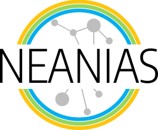The article “Real-Time Web-based Remote Interaction with Active HPC Applications”, by University of Portsmouth and collaborators, will be presented at IVAPP 2021, the 12th International Conference on Information Visualization Theory and Applications.
"Real-Time Web-based Remote Interaction with Active HPC Applications”
- Authors: Tim Dykes (1,4), Ugo Varetto (2), Claudio Gheller (3) and Mel Krokos (4).
- Affiliations: (1) HPE HPC/AI EMEA Research Lab, Bristol, United Kingdom, (2) Pawsey Supercomputing Centre, Kensington, Perth, WA, Australia, (3) Institute of Radioastronomy, INAF. Via P. Gobetti, 101 40129 Bologna, Italy, (4) School of Creative Technologies, University of Portsmouth, Eldon Building, Winston Churchill Avenue, Portsmouth, United Kingdom.
Abstract
Real-time interaction is a necessary part of the modern high performance computing (HPC) environment, used for tasks such as development, debugging, visualization, and experimentation. However, HPC systems are remote by nature, and current solutions for remote user interaction generally rely on remote desktop software or bespoke client-server implementations combined with an existing user interface. This can be an inhibiting factor for a domain scientist looking to incorporate simple remote interaction to their research software. Furthermore, there are very few solutions that allow the user to interact via the web, which is fast becoming a crucial platform for accessible scientific HPC software. To address this, we present a framework to support remote interaction with HPC software through web-based technologies. This lightweight framework is intended to allow HPC developers to expose remote procedure calls and data streaming to application users through a web browser, and allow real-time interaction with the application while executing on a HPC system. We present a classification scheme for remote applications, detail our framework, and present an example use case within a HPC visualization application and real world performance for remote interaction with a HPC system over a Wide Area Network.
Acknowledgement
We gratefully acknowledge Swinburne Centre for Astrophysics and Supercomputing for hosting author Tim Dykes while part of this work was completed. We thank Lucio Mayer, University of Zurich, for providing the GigaERIS data for visualization. Thanks to HPE & Cray UK for providing HPC resources. Mel Krokos acknowledges support by NEANIAS, funded by the EC Horizon 2020 research and innovation programme under grant agreement No. 863448.
Read the full article on ivapp.org. IVAPP is part of VISIGRAPP, the 16th International Joint Conference on Computer Vision, Imaging and Computer Graphics Theory and Applications.
